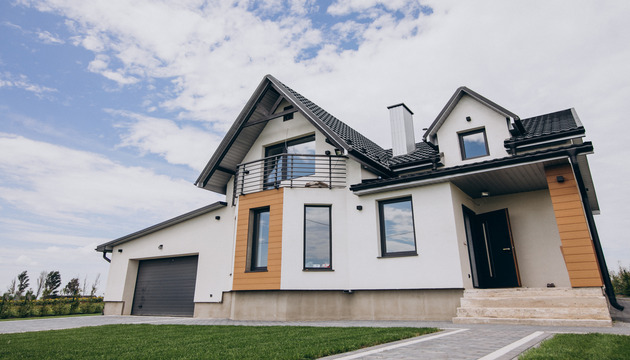Cost to Build a House in Ontario?
Cost to Build a House in Ontario?
Building a house in Ontario in 2024 is an exciting prospect, yet it comes with its own set of challenges and considerations, primarily the cost. Whether you’re a first-time home builder or a seasoned investor, understanding the financial landscape is crucial. This blog will explore the multifaceted expenses associated with constructing a home in this vibrant Canadian province.
From sourcing materials to hiring the right contractors, we’ll discuss what you can expect to invest and how to efficiently manage your budget. Let’s break down the cost to build a house in Ontario, ensuring you’re well-informed and prepared to make your dream home a reality.
Overview of Housing Market in Ontario:
The Ontario housing market in 2024 presents a diverse and dynamic landscape, characterized by regional variations and influenced by broader economic factors. As of mid-2024, the market has shown signs of both stability and fluctuation, with some areas experiencing price adjustments while others maintain strong demand.
The cost to build a house in Ontario remains a significant concern, affected by various factors including labor costs, material prices, and regulatory hurdles. These factors contribute to the overall price to build a house in Ontario, which has seen some adjustments depending on location and market conditions. For example, major cities like Toronto and Ottawa have seen different trends, with Toronto experiencing a slight dip in prices and Ottawa showing a moderate increase.
In terms of housing market activity, Ontario has witnessed a mixed scenario where some regions are in a buyer’s market while others are balanced. This variability is largely driven by the sales-to-new-listings ratio, which indicates the market type depending on the proportion of available houses to new listings.
For those looking to navigate the complexities of building or buying in this market, it is crucial to consider house building contractors who are familiar with regional trends and can provide accurate estimates and timelines. Additionally, financing home construction in the current economic climate requires careful planning and understanding of the available mortgage and financing options, as interest rates have played a critical role in shaping buyer and builder activities.
Overall, while the Ontario housing market faces challenges such as fluctuating interest rates and economic uncertainty, it also offers opportunities for potential homeowners and investors who can navigate the market conditions effectively. The current environment underscores the importance of thorough research and strategic planning in achieving successful real estate ventures in Ontario.

Factors Influencing the Cost of Building a House:
Here are some statistics and details that add depth to each factor influencing the cost of building a house in Ontario:
Land Costs and Location: In major cities like Toronto, the average land cost can start at about $400 per square foot, while in suburban areas like Peel, costs range from $370 to $420 per square foot. These variations highlight the significant impact of location on overall expenses.
Construction Costs: For different types of homes in Ontario, the construction costs vary widely:
- Luxury & Modern Homes: $340 – $420 per square foot.
- Major City Classic Home: $300 – $370 per square foot.
- Subdivision in Suburbs: $280 – $330 per square foot.
- Small Town New Build: $280 – $320 per square foot.
Design and Size: Building a two-story home is generally more expensive than a single-story due to additional structural and material needs. Moreover, custom designs tend to increase costs due to unique materials and specialized labor.
Permits and Regulations: The cost of building permits in Ontario can vary, but they are essential for legal compliance and can add a significant amount to your budget. For instance, permits can range from several hundred to thousands of dollars, depending on the project’s complexity and location.
Financing Home Construction: Different mortgage options like the completion mortgage, where funds are transferred post-construction, and the progress-draw mortgage, which disburses funds in stages according to construction milestones, offer flexibility in financing. These options reflect the financial strategies available to manage the large capital requirements of building a home.
Additional Costs: Soft costs, which include architectural drawings, permits, and legal fees, can range from $20 to $50 per square foot. These are critical to budget for as they encompass essential services and regulatory compliance that are not directly related to physical construction but are necessary for project completion.
Budgeting Tips:
When budgeting for the cost to build a house in Ontario, it’s crucial to strategize to ensure you maximize every dollar while achieving your dream home. Here are some practical budgeting tips for home construction that can help you manage your finances effectively:
Detailed Cost Breakdown: Start with a detailed cost estimate from your house building contractor. This should include all phases of building a house in Ontario, from land acquisition and construction costs to finishing touches. Knowing these details upfront helps avoid surprises.
Reserve Funds for Unexpected Costs: Always set aside a contingency fund, ideally 10-20% of the total project cost. This reserve helps cover unforeseen expenses, which are common in construction projects.
Choose Cost-Effective Materials: Research and select materials that offer durability without blowing your budget. Sometimes, opting for slightly less expensive alternatives can lead to significant savings without compromising quality.
Prioritize Needs Over Wants: Focus your budget on essential features and consider scaling back on luxury items or non-essentials. This prioritization ensures you don’t overspend on features that won’t provide a return on investment.
Regular Review and Adjustments: Continuously monitor your expenditures against your budget. Regular check-ins allow you to adjust plans or finances before costs overrun.
Opt for Vision Custom Homes: If you’re looking for a cost-effective solution while building a home in Ontario, opting for Vision Custom Homes can be an ideal option. They are known for providing budget-friendly solutions without compromising on quality, making them a preferred choice for homeowners looking to stay within financial limits.
These budgeting tips for home construction not only help in keeping your project within financial boundaries but also ensure that you are prepared for any unexpected changes in costs. Remember, effective budgeting is key to a successful build when tackling the cost to build a house in Ontario.
Financing Options:
When building a house in Ontario, financing the construction is a crucial step that requires careful planning and understanding of the available options. Here’s a breakdown of the common financing options tailored for the Canadian market:
Construction Mortgage: This is one of the primary methods for financing home construction in Ontario. A construction mortgage allows you to draw down on the loan amount in stages as the construction progresses. There are two main types:
- Progress Draw Mortgage: Funds are released at several key stages of construction, typically at the foundation pouring, framing completion, and finishing stages. Lenders send inspectors to verify each stage before releasing the next draw.
- Completion Mortgage: Funds are provided once the home is entirely built. This option may require you to have more capital upfront but provides a lump sum on completion, ensuring you don’t pay interest on funds before you need them.
Builder Financing: Some house building contractors or developers offer financing options directly to buyers. This can sometimes include special terms not available through traditional lenders, such as delayed payment schemes or lower interest rates during the construction phase.
Home Equity Line of Credit (HELOC): If you already own property, a HELOC allows you to access equity in your existing home to finance the construction of a new one. This option provides flexibility and typically offers lower interest rates compared to other types of loans.
Personal Savings: Utilizing personal savings for at least a portion of the construction can reduce the amount you need to borrow and thus decrease the overall interest paid over the life of any loans taken.
Government Programs: The Canadian government offers programs that can help in financing home construction. For instance, the Home Buyers’ Plan (HBP) allows individuals to withdraw funds from their Registered Retirement Savings Plans (RRSPs) to build or buy a house, under specific conditions.
Conclusion:
In conclusion, the cost to build a house in Ontario in 2024 is a complex, multifaceted issue influenced by a variety of factors including land costs, construction expenses, and financing options. For prospective homeowners, understanding these costs and planning accordingly is essential.
Utilizing the expertise of reliable house building contractors and exploring different financing home construction options can provide substantial guidance and financial management strategies to help you navigate this challenging but rewarding process. Whether you’re a first-time builder or looking to invest further in real estate, staying informed and proactive in budget planning will be key to transforming your vision into a tangible, livable reality.
Also Read: How to do interior of your home in a budget?
FAQS About Cost of House in Ontario
What is the average cost per square foot to build a house in Ontario?
The average cost to build a house in Ontario typically ranges from $280 to $450 per square foot. This cost varies based on location, materials, and the complexity of the project (Everything Mortgages).
Are there any government programs to help with building a house in Ontario?
Yes, there are government programs in Ontario that help with building a house, such as the Home Buyers’ Plan (HBP) which allows individuals to withdraw funds from their RRSPs to finance building a home under certain conditions.
How long does it typically take to build a house in Ontario?
It typically takes anywhere from 6 to 18 months to build a house in Ontario, depending on the size and complexity of the project, as well as weather conditions and any permitting or supply chain delays.
What are some common unexpected costs when building a house in Ontario?
Common unexpected costs when building a house in Ontario include delays due to weather, increases in material costs, changes in building codes, and unforeseen complications with the site itself, such as poor soil conditions or hidden obstacles (Everything Mortgages).


